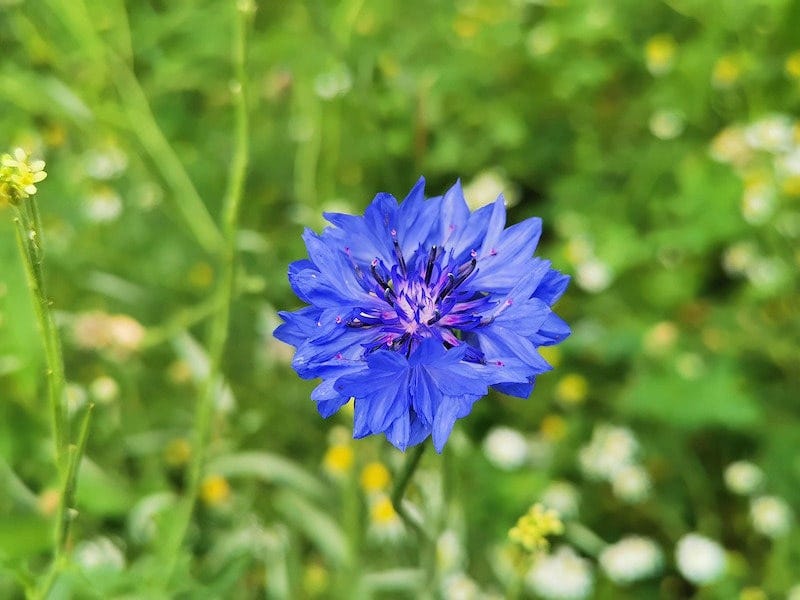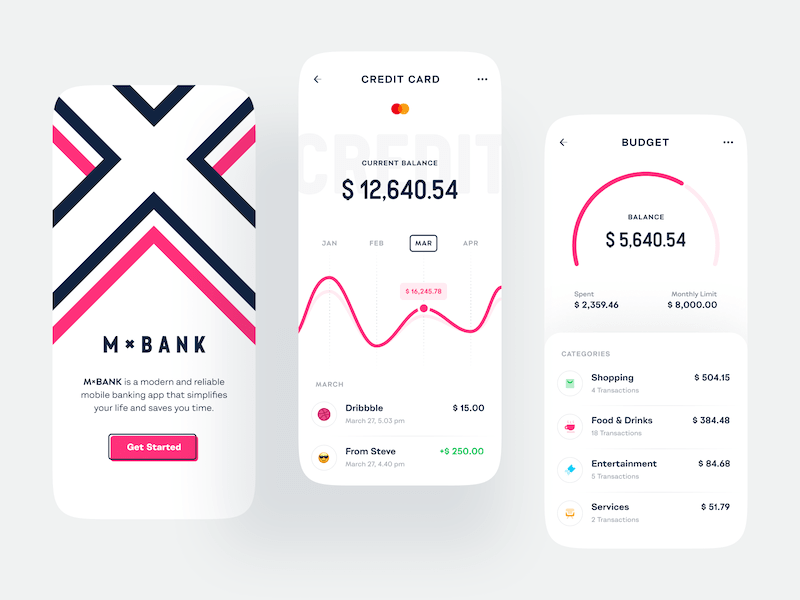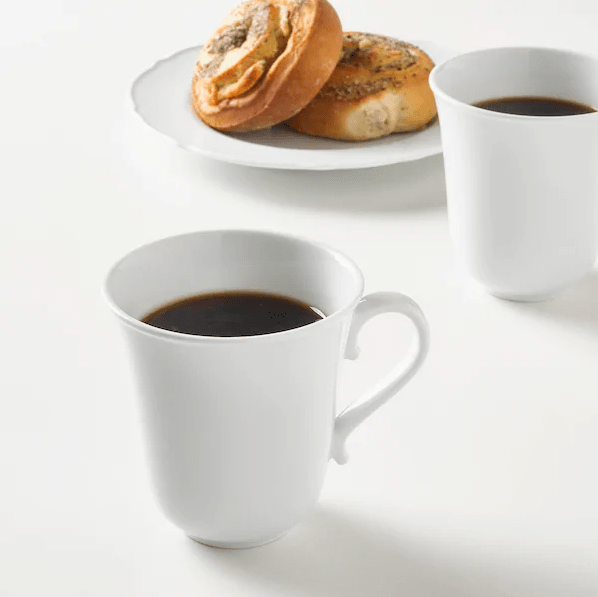spring事物 設計模式
What do you think about the phrase “beautiful design”? You like it, don’t care or does it make you wince?
w ^帽子你想想那句“美麗的設計”? 您喜歡它,不在乎還是讓自己畏縮了?
For many, “beautiful” is a derogatory term, whether because it doesn’t go with their personality, or like with some of the designers, they sometimes become coarsened by their professions and find this word trite and shallow. People have been arguing about the notion of beauty throughout their history and aren’t likely to stop doing it any time soon. Beauty vs function in design is one of the most perpetual controversial subjects ever. Some say that the design should be beautiful, others insist that its main goal is to be functional.
對于許多人來說,“美麗”是一個貶義詞,無論是因為它不符合他們的個性,還是像某些設計師一樣,有時他們會因自己的專業而變得粗俗,發現這個詞古怪而膚淺。 人們在整個歷史中一直在爭論美的概念,并且不太可能在不久的將來停止這樣做。 設計中的美感與功能是有史以來最具爭議的主題之一。 有人說設計應該漂亮,另一些人則堅持其主要目標是實用。
How do we decide what’s beautiful and what’s not? Is beauty really in the eye of the beholder or is it something deeply inherent in our species? Can aesthetics be a part of utility without contradicting it? Let’s find out more about beauty and aesthetics in design and whether this aesthetics/utility controversy at all makes sense.
我們如何確定什么是美的,什么不是美的? 是真的在情人眼中還是在我們物種中深深固有的東西? 美學可以成為實用性的一部分而又不矛盾嗎? 讓我們進一步了解設計中的美感和美學,以及這種對美學/實用性的爭議是否有意義。
什么是美學 (What is aesthetics)
The Merriam-Webster dictionary defines aesthetics as
Merriam-Webster詞典將美學定義為
“a particular theory or conception of beauty or art: a particular taste for or approach to what is pleasing to the senses and especially sight”.
“對美感或藝術的特定理論或概念:對使感官尤其是視覺產生愉悅感的特定品味或方法”。
Abstracting from the theory, in day-to-day life, something aesthetic means something like a combination of things that are pleasing to look at.
從理論中抽象出來,在日常生活中,某種美學意味著某種令人愉悅的事物的組合。
In nature, graphic expressiveness is often realized with the help of light and shadow. Photographers make use of it adding their knowledge about frame composition.
在自然界中,圖形表現力通常是在光和影的幫助下實現的。 攝影師利用它增加了關于構圖的知識。
With regard to design, beauty as we see it is based on proportions or composition ratios (like the golden ratio, for example), color combinations, and graphic expressiveness. It relates to any object.
關于設計,我們看到的美麗是基于比例或構圖比例(例如,黃金比例),顏色組合和圖形表達能力。 它與任何對象有關。
Aesthetics is not just about what we see, but humans being primarily visual beings, so we’ll focus on the sense of sight. So everything that corresponds to certain parameters, we consider as beautiful, in art as in everyday life.
美學不僅與我們所看到的有關,而且人類主要是視覺存在的人,因此我們將專注于視覺。 因此,與某些參數相對應的所有事物,在我們的藝術中都被視為與日常生活中一樣美麗。
But where does this appreciation of certain forms and combinations come from? Some are based on cultural experiences, but a lot originate from physiology.
但是,對某些形式和組合的欣賞從何而來? 有些是基于文化經驗的,但很多是基于生理學的。
美的生物學起源 (Biological origins of beauty)
Beauty is in the brain of the beholder. At least, that’s what neuroaesthetics says — a relatively new scientific discipline at the junction of neurobiology, art, and psychology, that has received its formal definition in 2002.
美麗是情人的大腦 。 至少這就是神經美學 –神經生物學,藝術和心理學交界處的一門相對較新的科學學科,該學科于2002年得到正式定義。
Semir Zeki is the Professor of Neuroaesthetics at University College London, who has been studying how the brain perceives beauty for many years.
Semir Zeki是倫敦大學學院神經美學的教授,多年來他一直在研究大腦如何感知美麗。
According to his studies, the concept of beauty developed long before our species appeared, millions of years ago. Due to nature’s reward system, animals began to feel a sense of satisfaction from what they saw. The basic quality of beauty from the point of view of neurobiology is that it should create a sense of reward. Give pleasure. Admiring an attractive face, a picturesque sunset, or a magnificent building creates a chemical reward in the brain. The area of ??the cortex, whose activity is associated with the perception of beauty, is generally activated every time we enjoy it, whether this beauty is of visual, musical, cognitive, or even mathematical origin, in contrast to Aristotle’s view that the perception of beauty varies with different objects (or types of art) in which it is found.
根據他的研究 ,美麗的概念早在數百萬年前的我們的物種出現之前就已經發展起來。 由于大自然的獎勵制度,動物從看到的東西開始感到滿足感。 從神經生物學的角度來看,美的基本品質是它應該創造一種獎賞感。 給我快樂。 欣賞迷人的面Kong,如詩如畫的日落或宏偉的建筑會在大腦中產生化學獎勵。 與亞里斯多德的觀點相反,皮層活動與美感相關的皮層區域通常在我們每次享受時都會被激活,無論這種美是視覺,音樂,認知乃至數學起源的。對美的感知因發現它的不同對象(或藝術類型)而異。
Professor Zeki claims that in order for someone or something to be considered beautiful, its visual parameters must fit into narrow frames. We inherit the concept of the structure of the face and body biologically. With the artistic beauty, it’s more complex, though it basically comes down to ideas that different cultures also have some similarities due to the basic biology.
Zeki教授聲稱,為了使某人或某物看起來很漂亮,其視覺參數必須適合狹窄的框架。 我們從生物學上繼承了面部和身體結構的概念。 有了藝術美,它就更加復雜了,盡管它基本上可以歸結為不同的文化由于基本生物學也有一些相似之處的想法。

Denis Dutton, who was the Professor of Philosophy at the University of Canterbury in Christchurch, New Zealand, had even bolder views on the biological nature of perceiving beauty. His Darwinian theory of beauty claims that art, music, and other manifestations of beauty don’t depend on the individual characteristics of perception but are an integral part of human nature. A sense of beauty, coupled with pleasure and acuteness of experiences, lies in the sphere of evolutionary development. Beauty is an adaptation mechanism that we develop and strengthen by creating and enjoying works of art.
丹尼斯·達頓 ( Denis Dutton )是新西蘭基督城坎特伯雷大學(University of Canterbury)的哲學教授,他對感知美的生物學本質抱有更大的見解。 他的達爾文美感理論聲稱,藝術,音樂和其他美感表現不依賴于感知的個體特征,而是人性的組成部分。 美感,加上愉悅和經驗的敏銳度,屬于進化發展的范疇。 美麗是我們通過創造和享受藝術品來發展和加強的一種適應機制。
Professor Dutton stated that though it is widely believed that the earliest works of art were cave paintings (approximately 32,000 years old), in reality, artistic skills are much older. He referred to the so-called Acheulean axes, the oldest stone tools (about 1.76 million years old), that Homo Erectus made even before they knew how to speak.
達頓教授說,盡管人們普遍認為最早的藝術品是洞穴壁畫(約有32,000年的歷史),但實際上,藝術技能要古老得多。 他提到了所謂的Acheulean軸,這是最古老的石器工具(約有176萬年之久),Homo Erectus甚至在他們不知道如何說話之前就制造過。

The number of axes found suggests that they could not be used for hunting. The blades of some axes don’t have traces of use or they are too large to be used for their intended purpose. These facts, and their elegant symmetrical shape and fine materials lead to the most evident conclusion — they are the earliest known works of art, that can inspire even today.
發現的軸數表明它們不能用于狩獵。 某些軸的刀片沒有使用痕跡,或者它們太大而無法用于其預期目的。 這些事實以及其優雅的對稱形狀和精美的材料可以得出最明顯的結論-它們是已知的最早的藝術品,即使在今天也可以激發靈感。


The Darwinian aspect of this theory lies in the fact that similar to the peacock’s tail beauty, the ability to masterfully execute such tools meant additional advantage in the process of sexual selection.
該理論的達爾文主義方面在于,與Kong雀的尾巴美感相似,熟練地執行此類工具的能力意味著在性選擇過程中的額外優勢。
Stefan Sagmeister:捍衛美麗 (Stefan Sagmeister: In defense of beauty)
Beauty is one of the UI/UX design trends for 2020.
美麗是2020年UI / UX設計趨勢之一 。
History knows cases when the subjective aesthetics of design were opposed to its functionality. This happened in the late 19th-early 20th centuries primarily in graphic design, architecture, and interior design. Functionalism in architecture was born whose main idea was that the form of an object should strictly obey its function. All decorations that don’t serve any immediate purpose must be removed. It was born as a result of changes in building techniques, new types of buildings required, and changing cultural ideals. Technologies and mass production played their role too. This aesthetic approach has had a major impact on today’s world. To the point, the concept of beauty was at some point despised.
歷史知道案例的設計主觀美學與其功能相反。 這發生在19世紀末20世紀初,主要發生在圖形設計,建筑和室內設計中。 建筑中的功能主義誕生了,其主要思想是對象的形式應嚴格遵守其功能。 所有沒有任何直接用途的裝飾品都必須刪除。 它的誕生是由于建筑技術的變化,所需的新型建筑以及不斷變化的文化理想的結果。 技術和大規模生產也發揮了作用。 這種美學方法對當今世界產生了重大影響。 到了這一點,美的概念在某個時候被輕視了。
Whether beauty needs to be defended is open to debate, but if we were to name a person who’s well-known for it, it would be Stefan Sagmeister — a New York-based graphic designer, storyteller, and typographer. After studying the subject of happiness, he decided to tackle the subject of beauty:
是否需要捍衛美麗尚有待商debate,但如果我們要說出一個以美麗聞名的人,那就是斯蒂芬·薩格邁斯特(Stefan Sagmeister),他是紐約的平面設計師,講故事的人和印刷術家。 在研究了幸福的主題之后,他決定著手解決美麗的主題:
Some of his ideas from this video:
該視頻中的一些想法:
Beauty is natural for people of all time periods
美容對于所有時間段的人都是自然的
People adorned their surroundings living in caves and castles. In Gothic, Renaissance, Baroque eras — always and everywhere. It’s only in the 20th century that they’ve decided to seriously doubt it in exchange for function. Modernists build houses with functionality in mind and avoid ornamentation, but people who live in these houses start decorating them immediately.
人們對居住在洞穴和城堡中的周圍環境進行裝飾。 在哥特式,文藝復興時期,巴洛克時期–時時無處不在。 直到20世紀,他們才決定以功能換取其嚴重懷疑。 現代主義者在建造房屋時會考慮到功能性并避免裝飾,但是住在這些房屋中的人會立即開始對其進行裝飾。
Beauty improves living standards
美麗提高生活水平
Beautiful architecture reduces the crime rate and raises the level of happiness. Life can be destructive for the psyche in places that lack beauty. Semir Zeki would say that this happens because where there is no beauty, there is no encouragement.
美麗的建筑降低了犯罪率,提高了幸福感。 在缺乏美感的地方,生活可能會對心靈造成破壞。 Semir Zeki會說,發生這種情況是因為沒有美,就沒有鼓勵。
People usually agree on what is beautiful and what’s not
人們通常會在美麗和不美麗之間達成共識
People en masse favor the same colors and the same shapes. Most can recognize the harmonious works of acknowledged artists among fakes. Even mentally disabled people show the same results.
人們普遍喜歡相同的顏色和相同的形狀。 大多數人都可以識別假貨中公認的藝術家的和諧作品。 甚至弱智人士也顯示出相同的結果。
Lack of beauty = indifference
缺乏美麗=冷漠
As a rule, no one makes ugly things on purpose. They are done as a result of indifference. To carry on with a theme of living standards, people litter more in ugly places, because they don’t care. In beautiful places, they take pictures and behave better.
通常,沒有人故意制造丑陋的東西。 他們是無動于衷的結果。 為了維持生活水平這一主題,人們在骯臟的地方亂丟垃圾,因為他們不在乎。 在美麗的地方,它們可以拍照并表現得更好。

Image:
圖片: phaidon.comphaidon.com
設計美學:實用 (AESTHETICS IN DESIGN: Practical use)
This is where the line between aesthetics and utility becomes blurred. Beauty is more than just a superficial strategy: it has a pervasive influence on our lives, stimulating our senses, and ultimately making the world a better place.
這就是美學與實用性之間的界線變得模糊的地方。 美麗不只是一種膚淺的策略:它對我們的生活產生深遠的影響,激發我們的感官,最終使世界變得更美好。
美的價值和光暈效果 (The value of beauty and the Halo effect)
According to the paper by Ines Schindler, a senior research fellow at the Max-Planck Institute for Empirical Aesthetics, beauty is something that we seek for its own sake. The act of admiring the aesthetics is emotionally fulfilling and gives us pleasure, thus becoming an ultimate goal instead of being just a side order.
根據馬克斯-普朗克經驗美學研究所的高級研究員Ines Schindler的論文 ,美是我們自己尋求的東西。 欣賞美學的舉動在情感上是令人滿意的,并給我們帶來快樂,因此成為最終目標,而不僅僅是旁觀者。
What’s more, the so-called Halo effect makes it difficult to separate the content of a work from its form. The Halo effect is a cognitive bias that in simple words means that what is beautiful seems also interesting, good, and usable.
此外,所謂的暈輪效應使很難將作品的內容與其形式分開。 Halo效應是一種認知偏見,用簡單的詞來說,意味著美麗似乎也很有趣,很好并且可用。

美麗著迷 (Beauty captivates)
Aesthetic experience is similar to the concept of flow, states in his work Mihaly Csikszentmihalyi, a Hungarian-American psychologist.
匈牙利裔美國人心理學家Mihaly Csikszentmihalyi在其作品中指出,審美體驗類似于流動的概念。
When people marvel at somebody or something, they immerse themselves in the process, with a strong attachment to the person or object that fascinates them. For example, the most favorite shade of my favorite color is cornflower blue:
當人們驚嘆于某人或某物時,他們會沉浸在自己的過程中,并與使他們著迷的人或物體有著強烈的依戀。 例如,我最喜歡的顏色中最喜歡的陰影是矢車菊藍色:

So any product featuring a similar shade immediately attracts my attention and I stop to get my dose of endorphins:
因此,任何具有類似陰影的產品都會立即引起我的注意,我停下來服用劑量的內啡肽:

It’s subjective, of course, but often culture-based. The power of color associations can be used to a designer’s advantage.
當然,這是主觀的,但通常是基于文化的。 顏色關聯的功能可用于設計師的優勢。
簡約之美 (Beauty in simplicity)
People prefer things that are easy to understand. According to the study by Rolf Reber, the Professor of Psychology at the University of Oslo, aesthetic pleasure can be derived from the perceiver’s ease-of-processing. In other words, the easier something can be processed, the more welcome it becomes to a person. This idea explains why a complex idea presented in an accessible way can give a feeling of aesthetic pleasure.
人們喜歡易于理解的事物。 根據奧斯陸大學心理學教授羅爾夫·雷伯(Rolf Reber)的研究 ,審美樂趣可以從感知者的易處理性中獲得。 換句話說,某些東西越容易處理,就越受人歡迎。 這個想法解釋了為什么以可訪問的方式呈現的復雜想法可以給人以美感。
Moreover, even the captivating effect of the golden ratio is perhaps can be explained by the sensation of simplicity it gives to an onlooker.
而且,甚至黃金分割率的迷人效果也可以通過它給旁觀者帶來的簡單感來解釋。

Image:
圖片: tomaskral.chtomaskral.ch

Banking App Design by
ShakuroShakuro的銀行應用程序設計
美麗多變 (Beauty is changeable)
Although our attitude to beauty is integrated into us as a species, in more detailed respect, people tend to disagree about much of what they find beautiful or ugly. Sometimes something too beautiful is perceived as ugly and vice-versa, like with the case of Barocco and brutalism style usage in web design.
盡管我們對美麗的態度已融入一個物種,但在更詳細的方面,人們傾向于不同意他們發現的美麗或丑陋的事物。 有時候,太美的東西被認為是丑陋的,反之亦然,例如在網頁設計中使用Barocco和野蠻風格的情況。
As suggested in the research by Haiyang Yang of the Johns Hopkins University, USA, and Leonard Lee of the National University of Singapore, these preferences may be changing constantly in response to the media and popular culture. Take a look at the video by an English-New Zealand make-up artist and author Lisa Eldridge, where she shows the changeable nature of what was considered beautiful in the history of make-up:
正如建議研究由海揚約翰斯·霍普金斯大學,美國和新加坡國立大學的倫納德·李,這些偏好可能在回應媒體和大眾文化的不斷變化。 觀看由英國和新西蘭的化妝師兼作家莉薩·埃德里奇(Lisa Eldridge)制作的視頻,她展示了化妝史上被認為是美麗的事物的多變性質:
結合美學和功能 (Combining aesthetics and functionality)
Design is not art. Design’s main task is to make something usable when the functional task comes first, and the aesthetics are secondary. Design should solve the problem for which it is created. The function is first defined by the purpose of an object, and the aesthetics depend on the function. If you are creating a website, then its readability and usability are more important than in what style it’s made. Because there are a lot of styles.
設計不是藝術。 設計的主要任務是在功能任務排在第一位且美觀次要時使某些東西可用。 設計應解決為其創建的問題。 首先根據對象的目的定義功能,而美觀取決于功能。 如果要創建網站,則其可讀性和可用性比網站的樣式更為重要。 因為樣式很多。
Utility is expected to come by default. You can’t impress people by something that just works fine. Perhaps, this is why they are craving for something that differentiates. Like beauty. It’s possible to combine the best sides of both at the same time. These are not mutually exclusive things. When the design is done right, you don’t have to choose between aesthetics and functionality. Great designers see an object and find the fitting aesthetics that accentuate its value.
實用程序默認為默認。 您無法通過效果良好的方法打動人們。 也許,這就是為什么他們渴望與眾不同的東西。 喜歡美麗。 可以同時結合兩者的最佳方面。 這些不是互斥的。 當設計正確完成時,您不必在美觀和功能之間進行選擇。 偉大的設計師看到了一個物體,并發現了突出其價值的裝修美學。
This is an ordinary IKEA Upplaga mug that you can buy for $2.99:
這是一款普通的宜家Upplaga馬克杯,您可以以2.99美元的價格購買:

Despite the famous simple and utilitarian Scandinavian design of all things IKEA, the company frequently uses some ornamentation in their designs. Like this cup, made in retro style with “unnecessary” handle elements and soft shapes. Many people would prefer this design instead of something strictly functional, deriving pleasure from using it. This way the beauty becomes the function.
盡管宜家采用了著名的簡單實用的斯堪的納維亞風格設計,但該公司在設計中經常使用一些裝飾。 像這杯一樣,以復古風格制成,帶有“不必要的”手柄元素和柔軟的形狀。 許多人寧愿使用這種設計,也不愿使用嚴格的功能,而從使用中獲得樂趣。 這樣,美就變成了功能。
Sometimes, it’s curiously vice-versa, when the function becomes the beauty, like with transparent watches:
有時,奇怪的是反之亦然,當功能變得美麗時,就像透明手表一樣:

Image:
圖片: hublot.comhublot.com
Great design makes the function so obvious that you cannot imagine an item made in another form, like a wheel, for example, that for this reason doesn’t need to be reinvented. It’s very functional and has the most universally liked round form, with aesthetics emerging from the functions of the object. In the case of apps and websites, it is applicable as UI/UX design, that it is so clear and user-friendly, that itself makes the site or app look nice(r).
出色的設計使功能如此明顯,以至于您無法想象以其他形式(例如,輪子)制成的物品,因此不需要重新發明。 它非常實用,具有最普遍喜歡的圓形形狀,并且從物體的功能中產生了美感。 就應用程序和網站而言,它適用于UI / UX設計,它是如此清晰且易于使用,本身使該網站或應用程序看起來不錯。
Combining utility and aesthetics in design can be very difficult. There are countless groups of people and taste preferences. That’s why there are no ready-made perfect solutions in design. That’s why it is so important to be in the know of recent design trends and skillfully apply them in your works (or not, if it’s not required).
在設計中將實用性和美觀性相結合可能非常困難。 有無數的人群和口味偏好。 這就是為什么在設計中沒有現成的完美解決方案的原因。 這就是為什么了解最新的設計趨勢并熟練地將其應用到您的作品中(或不需要,如果不需要的話)非常重要的原因。
But the result is worth it.
但是結果值得。
Originally published at https://shakuro.com.
最初發布在 https://shakuro.com 。
翻譯自: https://uxplanet.org/what-makes-something-beautiful-and-how-to-use-it-in-design-a5491e09256d
spring事物 設計模式
本文來自互聯網用戶投稿,該文觀點僅代表作者本人,不代表本站立場。本站僅提供信息存儲空間服務,不擁有所有權,不承擔相關法律責任。 如若轉載,請注明出處:http://www.pswp.cn/news/274645.shtml 繁體地址,請注明出處:http://hk.pswp.cn/news/274645.shtml 英文地址,請注明出處:http://en.pswp.cn/news/274645.shtml
如若內容造成侵權/違法違規/事實不符,請聯系多彩編程網進行投訴反饋email:809451989@qq.com,一經查實,立即刪除!)


)


)












